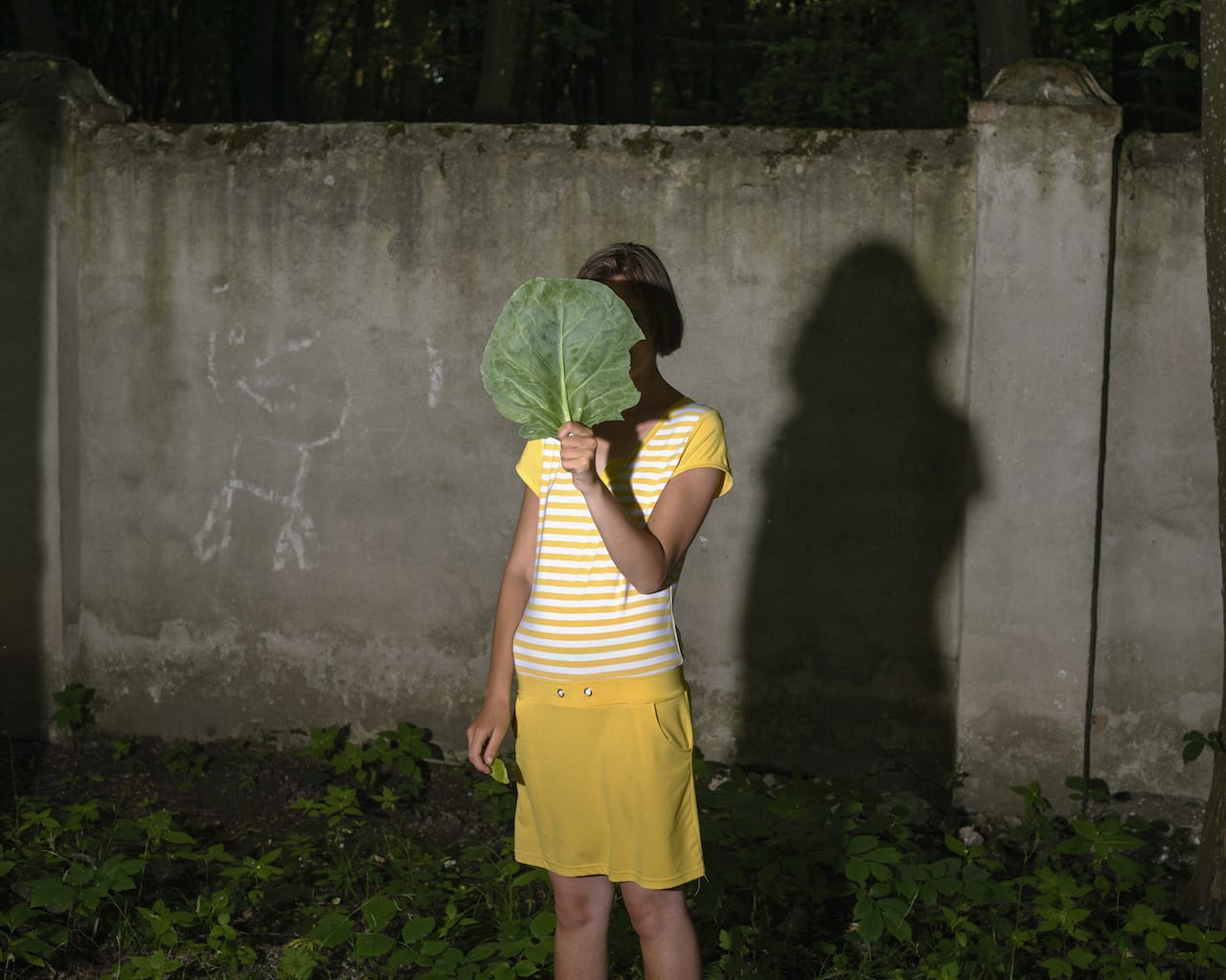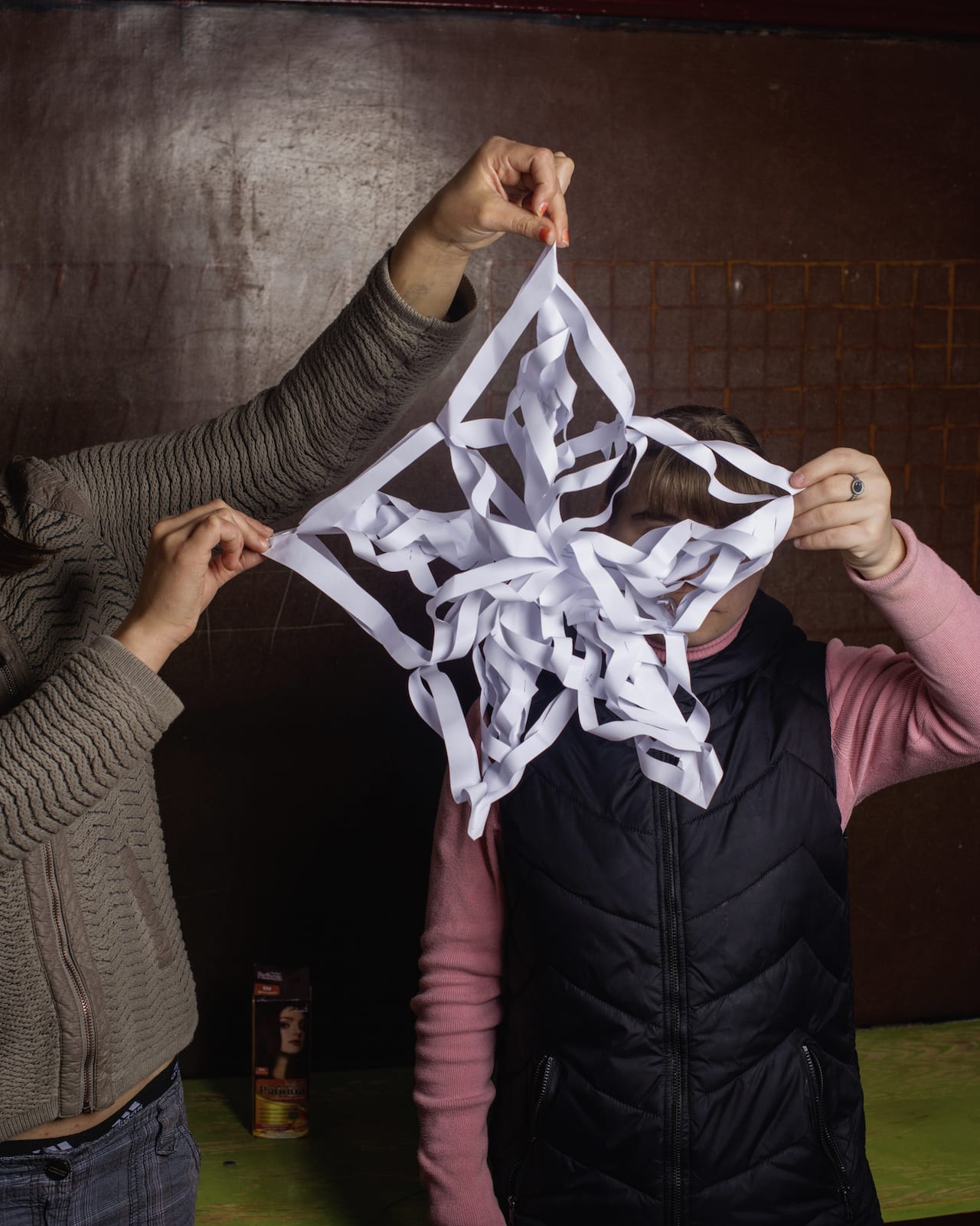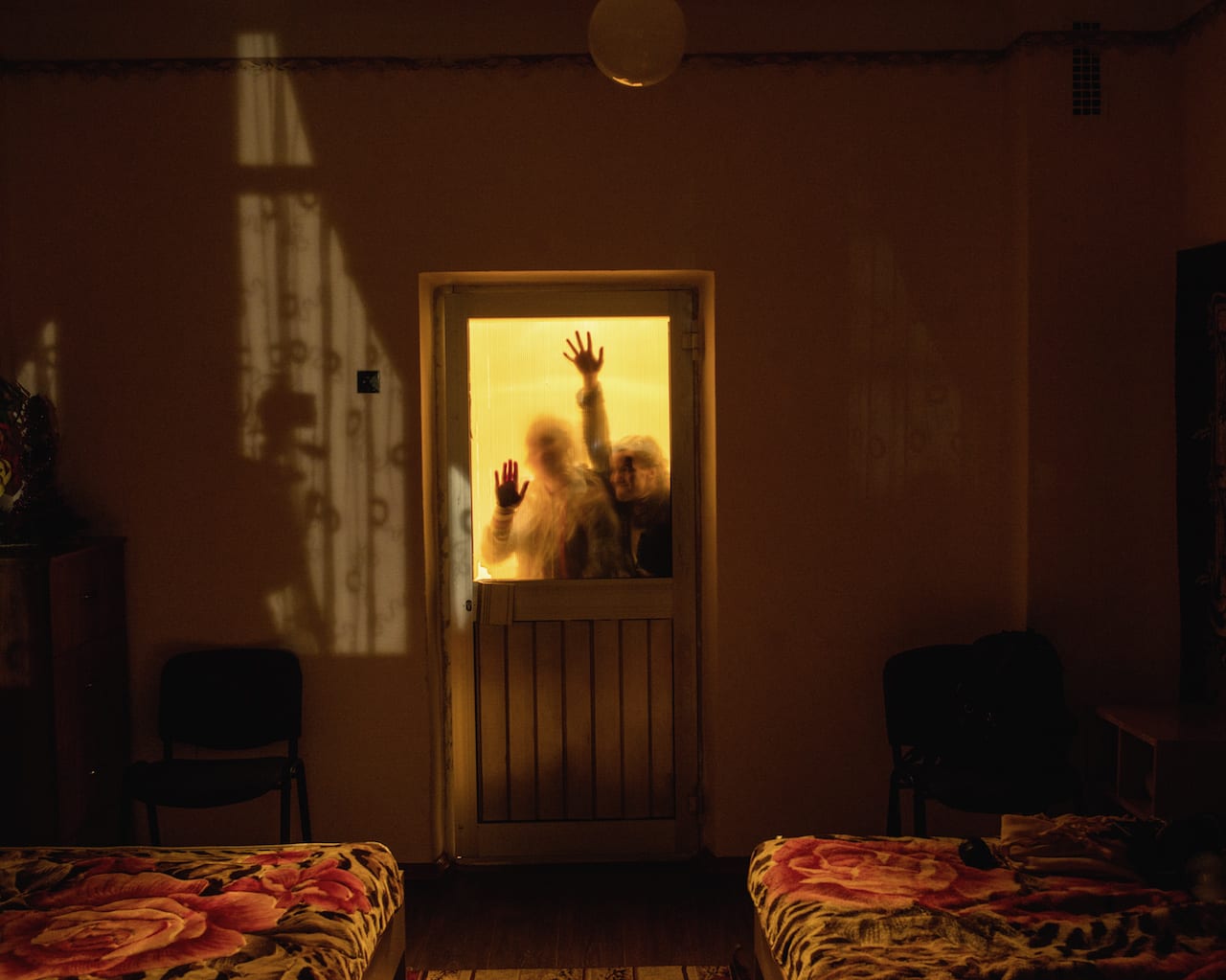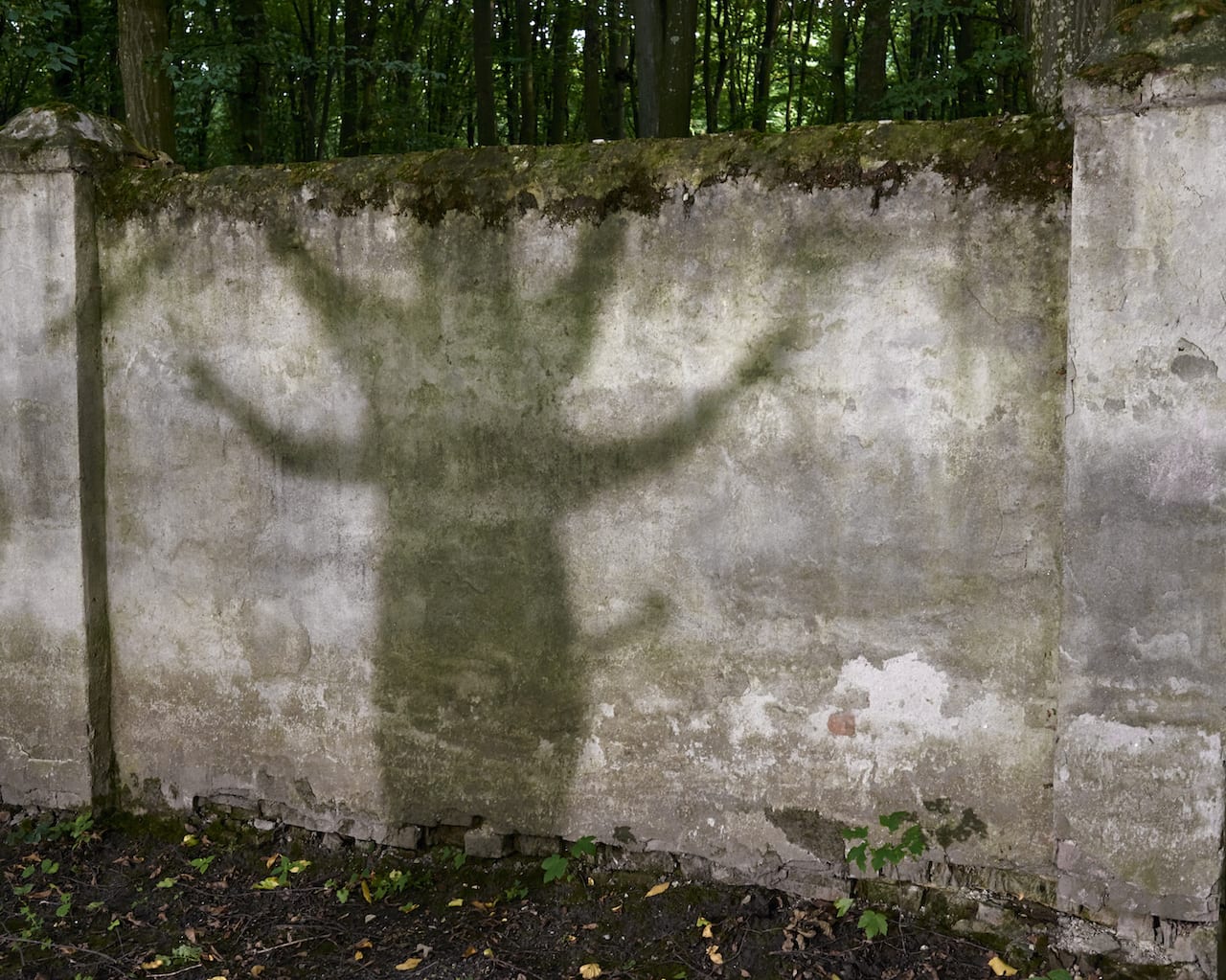Carolyn Drake first visited Ukraine more than a decade ago, as part of a year-long Fulbright fellowship investigation of changing notions of gender in the former USSR. Coming of age at the end of the Cold War, and with preconceptions about the region, she “saw it as a chance to step out of my present frame of reference, as a way to look at the malleability and impermanence of beliefs,” she recalls.
Searching for expressions of female identity in the West of the country, she met the hosts of a church-run orphanage, who directed her to an older institution nearby called Petrykhiv Internat. Tucked away in a forest on the outskirts of Ternopil, it was a state-run boarding house, where around 70 girls marked as ill or disabled had been sent to live. Labelled abnormal, they had been deemed unfit to live beyond the home’s towering walls.
“I remember a lot of children yearning for affection; tugging, pulling, and caressing,” Drake recollects of her initial visit. “I remember nurses in white uniforms supervising classrooms, dark hallways, girls bouncing and swaying while the boombox blasted beats over the balcony. It was like the backstage arena for kids who didn’t make the cut for the model Soviet child.”
That first trip took place in 2006; eight years later, she returned, eager to find out what had become of the girls and their home. “I expected to show up and ask someone on the staff how I could find the girls,” she says. “But when I arrived, I found most of them were still there, now in their twenties.
“The place was set apart by the same concrete wall, the women grew cabbages and pulled weeds in the same summer garden, and they had the same stick mops to clean the floors. The most significant change I saw was that the girls had grown up.”
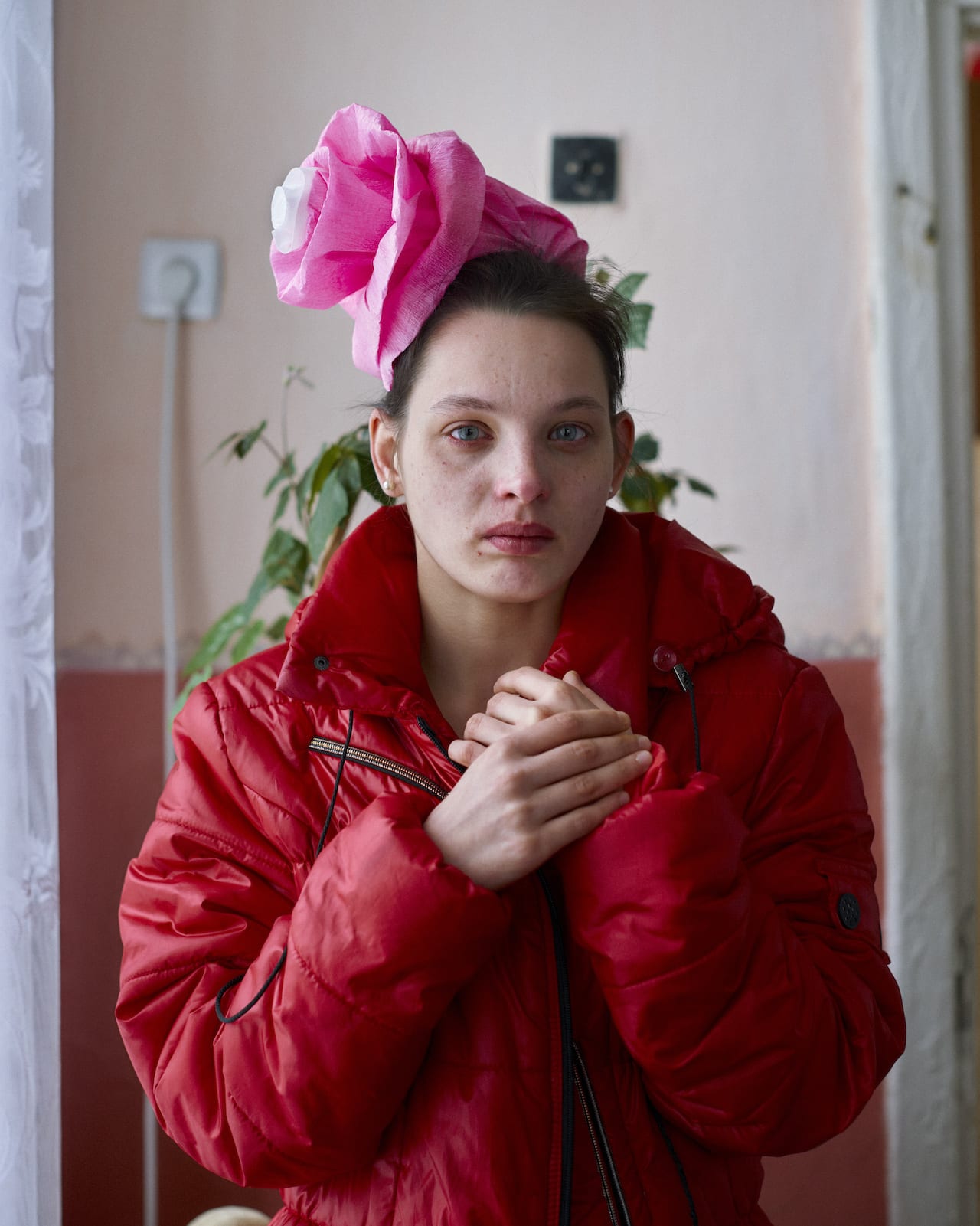
In the intervening years, Drake had completed two projects that had deepened her interest in engaging with communities and exploring the interactions within them. In Two Rivers (2007-13), she examined the expansive territory between the Amu Darya and Syr Darya rivers in central Asia, for example, working with fringe communities in an area where she found “political allegiances, ethnic bonds, in constant flux”.
At the same time she worked on Wild Pigeon (2007-14), photographing the landscape and Uyghur people in the remote yet rapidly transforming territory of Xinjiang in west China. The latter incorporated an additional element of engagement with the community: Drake travelled around with her prints of the area and some art supplies, inviting those she met to draw on, collage, embroider, or reassemble the photographs. In so doing, she hoped to integrate Uyghur perspectives into the work.
“It allowed a different kind of interaction with people, one that was face-to-face and tactile, if mostly without words,” she says. “There was a kind of creative exchange that took place that was removed from everyday life.”
These experiences informed her return to the Ukraine, helping shape her approach for what became a new series, Internat. Over a three-year period, Drake photographed and worked with these women, many of whom she had first met and photographed as children.
Despite significant restrictions set by the home’s director (she was only granted access to the hallway, patio and one classroom, and was regularly prevented from making photographs), she found ways of integrating unexpected play into otherwise uneventful daily routines. “I let my rational brain interfere more than I had before by bringing preconceived ideas to the shoots,” she writes.
But if Drake came prepared with possible scenarios, her photographic process was more collaborative than in previous projects. “The ideas I arrived with became a lot more interesting once the women got involved and started transforming them, sometimes just by being themselves,” she says.
“We played at picture-making, using their bodies and objects found around the building as content, and using this environment as a stage for imagining something beyond it.”
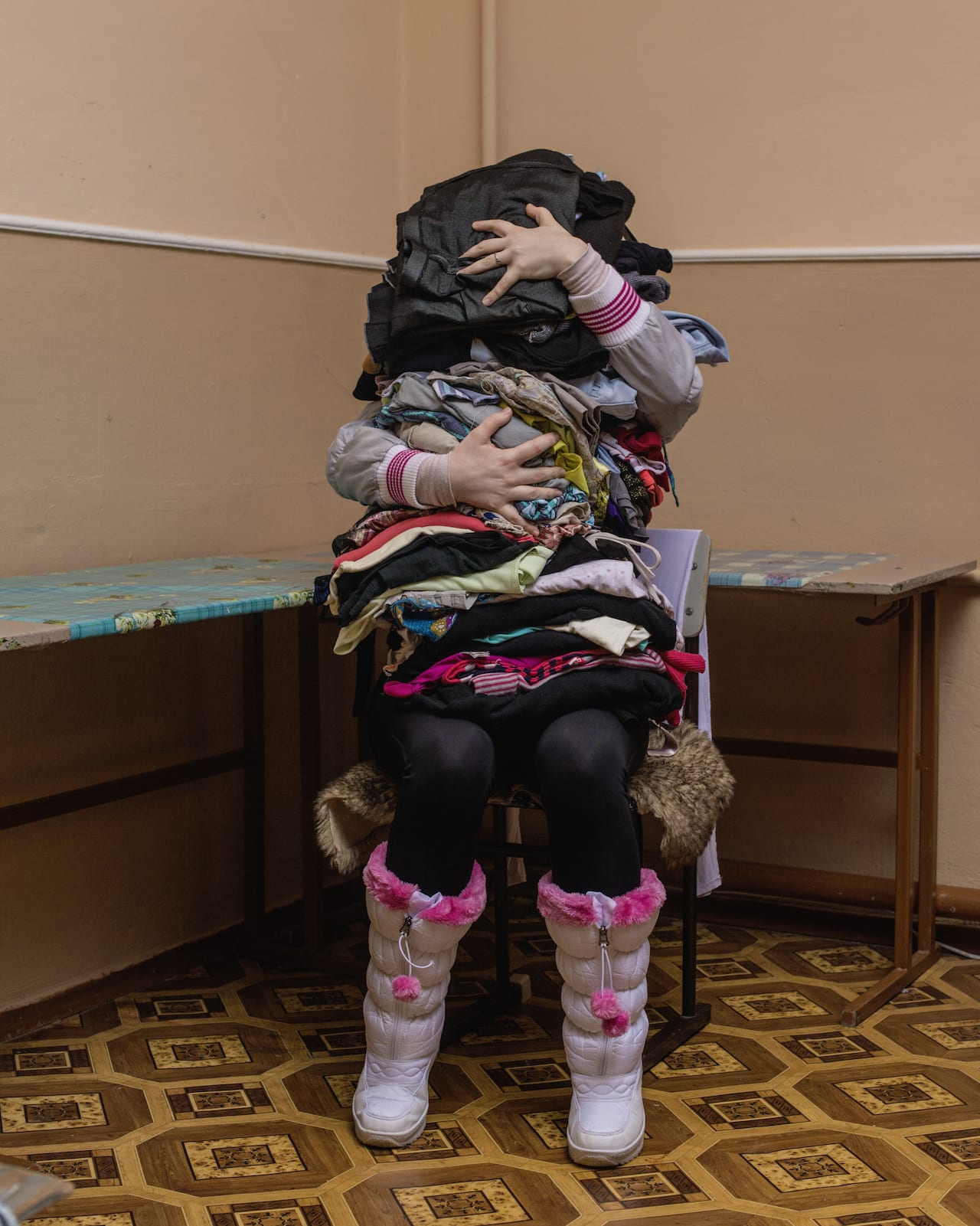
The resulting photographs illustrate the surreal world these women crafted alongside the harsher reality of their stark home. By including them in her creative process, Drake felt she could “address issues I had with the power dynamic of classical documentary storytelling – who gets to tell whose story, and on whose behalf?”
She concluded that, “This blending of authorship gave the work more depth.”
And this blended authorship translated into the book she made of Internat, working with her long-time collaborator, designer Sybren Kuiper. On the cover is a crudely painted illustration of an enigmatic woman, eyes downcast, seemingly not of this time. Inside the publication, the photographs are bookended with similarly altered images.
Drake had asked the women to paint over pages from The Artist – a book about the life and influences of Taras Shevchenko, the now widely revered 19th century Ukrainian artist, ethnographer, serf, peasant and poet. Through an empowering gesture of revision, the women rework classical images – many of which are reference folklore or myth – illuminating, scratching out and transforming them.
“Shevchenko fought for the empowerment of peasants and their release from serfdom under Russian imperial rule,” she explains. “I liked the idea of considering this celebrated historical male figure – once himself a serf – in relation to these contemporary women of the internat, also serfs in a sense.”
Pitting reality against fantasy in thoughtful collaborative portraits, candid moments, and cryptic still lifes, with images of the thick walls surrounding the centre and sombre landscapes, Drake creates a world where the occult and everyday comfortably coexist. Sparks of creativity and profound expressions of sisterhood are offset by melancholic allusions to control, solitude and confinement. Internat teeters on the edge of narrative, cultivating an ambiguity that challenges the viewer to pause and reflect.
Drake’s enquiry is implicit throughout, the different strands of Internat serving as “vehicles for exploring questions about social control, individual versus collective identities, the freedoms of the imagination, and the construction of normal female behaviour,” as she writes in her introduction.
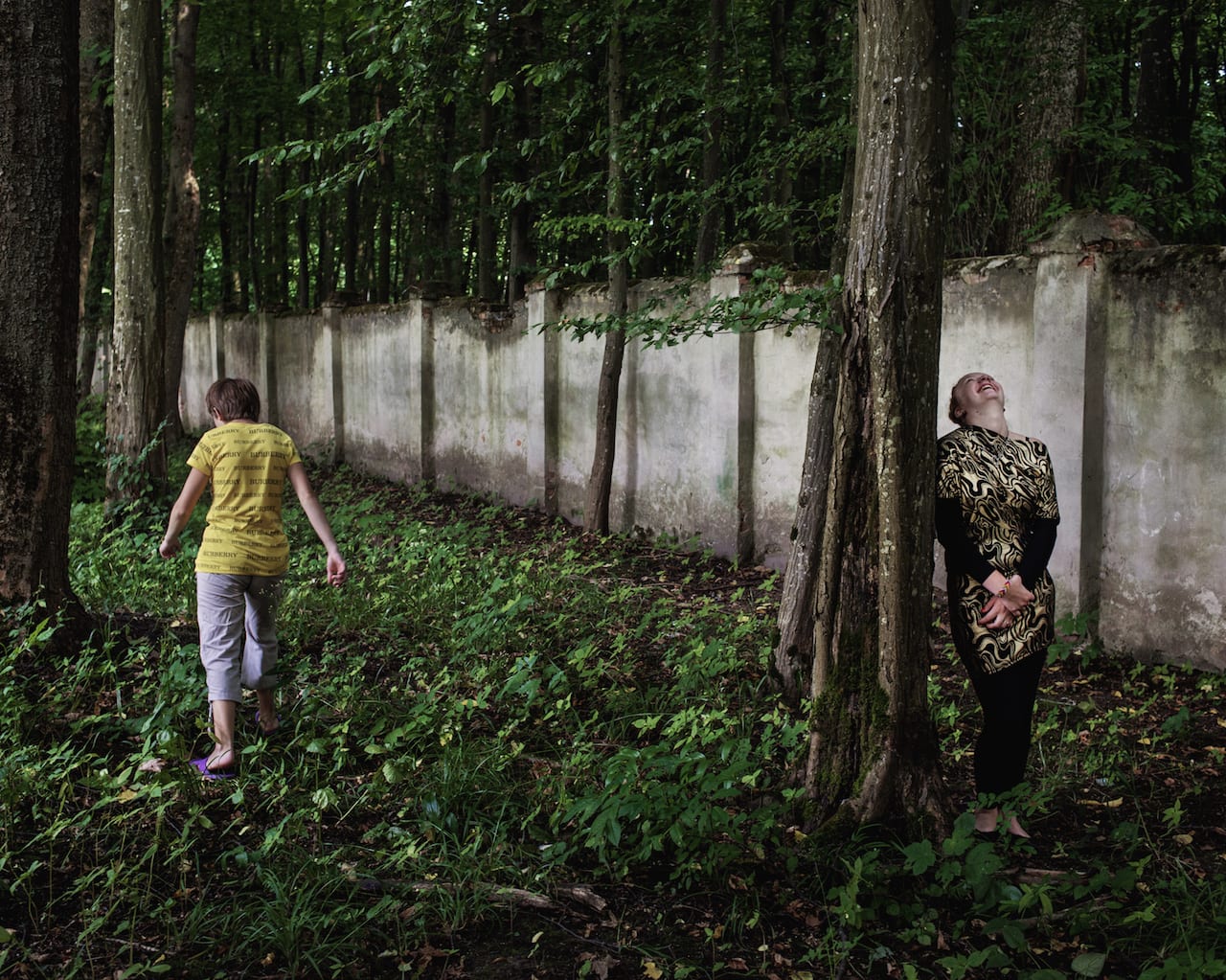
The photographs are traditionally presented in the book, but while the layout is conventional, the book itself is not. Drake explains: “I wanted each book to be individualised somehow, or to rest in an area between uniformity and individuality, as many of the pictures do. So we came up with this idea of allowing the cover to open up to reveal a spine that is both covered and exposed by a hand-coloured cloth.
“I see this open cover as a reference to the wall that appears over and over again in the background of the images. The images themselves also play with revealing and obscuring,” she adds, and it’s this relationship between content and form that elevates Internat from book to art object.
Internat, like Drake’s two earlier projects, underscores her unwavering interest in “the barriers and connections between people, between places, between photographer and subject, between ways of perceiving”. Her poetic approach to marginalised communities, who are more typcially depicted via photojournalism, subverts expectations.
Through her collaborative process, she provides these individuals with both an outlet for expressing their perspectives and imaginative reflections, and also validation for those ways of seeing and understanding the world.
Internat by Carolyn Drake is self-published, priced $75. It is sold out via Drake’s website, but copies may still be available via the bookstores she has listed in her bookshop. Internat is on show at the Houston Center for Photography from 11 May – 08 July www.hcponline.org Drake’s series Wild Pigeon is on display at the San Francisco Museum of Modern Art from 17 March – 23 September 2018 www.sfmoma.org Drake is an associate member of Magnum Photos www.magnumphotos.com carolyndrake.com
This article was first published in the March issue of BJP, which is available via www.thebjpshop.com
